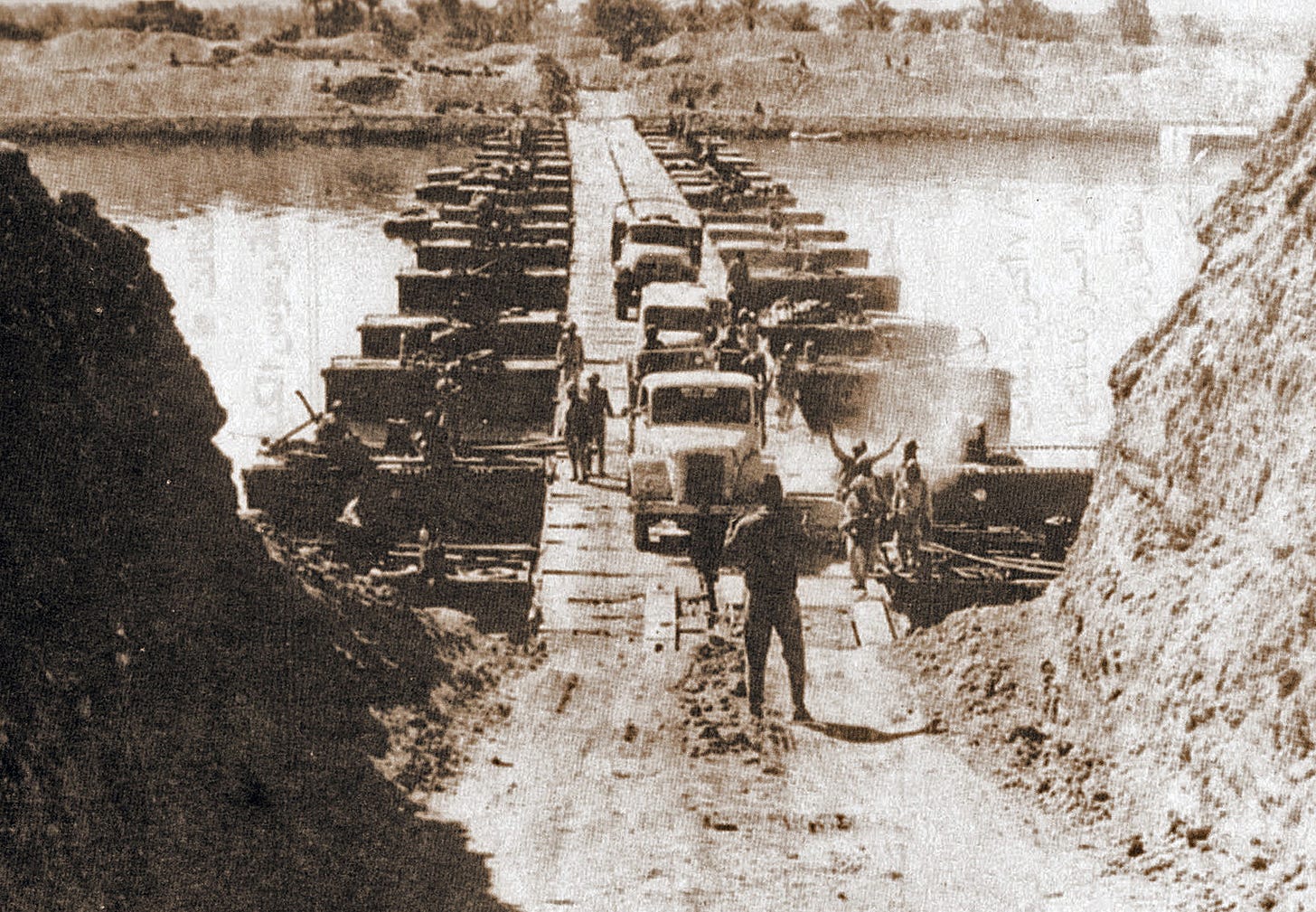The October War
Israel’s sense of invincibility dented
By autumn 1973, the Arab–Israeli conflict seemed like a settled story. The wars of 1948, 1956, and 1967 had been told through a familiar narrative: a small Israeli nation bravely defending itself against overwhelming Arab armies. Yet this story was largely a myth.
In 1948, Israel did not fight a united front of five Arab armies. Instead, the Arabs were a mix of disorganised groups with different aims and abilities. The Israelis actually outnumbered their opponents, had better equipment, and were more experienced in battle, with many veterans hardened by World War II.
In 1956, during the Suez Crisis, Israel, alongside French and British forces, achieved clear military victories, advancing into the Sinai Peninsula. But intense international pressure forced them to withdraw, showing that winning on the battlefield did not guarantee lasting gains.
In 1967, Israel launched a surprise attack that destroyed Arab air forces and quickly captured large territories. Despite claims of being the victim, Israeli leaders never really expected an attack, they just saw and seized a opportunity to strike first. The swift victory created a belief in Israel’s military superiority that seemed unchallengeable.
But on 6 October 1973, while Israel observed Yom Kippur and much of the Arab world was fasting during Ramadan, Egypt and Syria launched a carefully planned and coordinated attack. This time, the Arabs were not rash aggressors but had clear goals and a strong will to change the status quo.
The Federation of Arab Republics and Joint Planning
In early 1972, Egypt’s Anwar Sadat, Syria’s Hafez al-Assad, and Libya’s Muammar Gaddafi formed the Federation of Arab Republics. Although mostly symbolic and fragile politically, this alliance helped prepare for joint military action.
Egypt aimed to cross the Suez Canal and break through Israel’s Bar Lev Line in Sinai. The goal was not total conquest but to restore Arab dignity and gain leverage in diplomacy. Syria sought to recover the Golan Heights and push Israeli forces back.
Early Arab Successes and Israeli Setbacks
The war began with stunning Arab advances. Egypt’s Operation Badr was a well-planned assault. Thousands crossed the canal using water cannons to remove sand barriers, backed by massive artillery fire. The supposedly strong Bar Lev Line quickly fell, shaking Israeli morale.
At the same time, Syria launched a powerful attack on the Golan Heights, capturing territory and threatening Israeli defenses.
For the first time in years, the Arabs held the upper hand. Israel, caught by surprise, suffered heavy losses and took a defensive stance. The shock was so great that Israeli leaders publicly admitted the seriousness of their setbacks.
The Crucial Role of US Support
As Israel struggled, the United States stepped in decisively. Seeing the risk of wider conflict and the possible collapse of an important ally, the US launched Operation Nickel Grass, an airlift delivering vital military supplies, including ammunition, tanks, and aircraft parts.
This support was crucial. It allowed Israel to stabilize its lines, replenish forces, and launch counterattacks that pushed back Syrian troops and surrounded Egypt’s Third Army.
Sadat understood the limits of his military goals. Despite battlefield success, he knew confronting the US, Israel’s main supporter, was not possible for him, and restrained how far Egypt pushed.
Turning the Tide and Aftermath
Thanks to US aid and Israel’s rapid reserve mobilization, Israeli forces regained ground and ended the fighting with a UN-brokered ceasefire in late October.
The war had deep effects. Egypt gained symbolic victory, restoring Arab pride and paving the way for peace talks that led to the 1979 Egypt–Israel Peace Treaty. Syria’s outcome was less positive, with the Golan Heights still under Israeli control and no peace agreement, keeping tensions high.
A New Chapter in the Middle East
The October War shattered old assumptions. It proved Arab forces could surprise and fight effectively against a stronger Israel. It exposed the dangers of Israeli overconfidence and forced a rethink of strategy.
More importantly, it marked a shift from endless conflict toward the possibility of negotiation and peace, at least for some. The war was not just a simple story of aggression and defense but a complex clash of ambition, frustration, and changing power, one that still shapes the region today.
All articles on Diaspora Dialogue are free to read for one year from publication. If you’ve enjoyed this piece and would like to support my work, you can do so by subscribing, or by buying me a coffee. Thank you for reading and being part of the dialogue!





